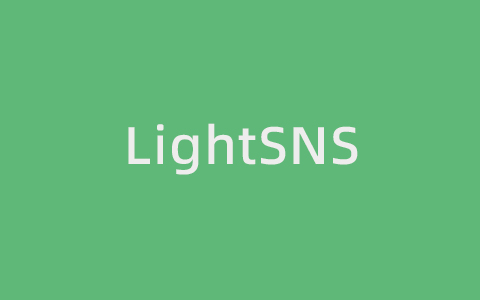一. 数据准备
index.jsp(注意:因为jsp中使用了jstl,需要添加jstl.jar和standard.jar依赖)
<%@ page contentType="text/html;charset=UTF-8" language="java" %>
<%@taglib prefix="c" uri="http://java.sun.com/jsp/jstl/core" %>
<html>
<head>
<title>$Title$</title>
</head>
<body>
<h1>首页</h1>
<c:if test="${sessionScope.username != null}">
<p>欢迎:${sessionScope.username},<a href="${pageContext.request.contextPath}/logout">退出</a></p>
</c:if>
<c:if test="${sessionScope.username == null}">
<p><a href="${pageContext.request.contextPath}/login">去登陆</a></p>
</c:if>
<ul>
<li><a href="${pageContext.request.contextPath}/user">个人中心</a></li>
<li><a href="${pageContext.request.contextPath}/product">商品详情</a></li>
</ul>
</body>
</html>
login.jsp:
<%@ page contentType="text/html;charset=UTF-8" language="java" %>
<%@taglib prefix="c" uri="http://java.sun.com/jsp/jstl/core" %>
<html>
<head>
<title>登录页面</title>
</head>
<body>
<form action="${pageContext.request.contextPath}/doLogin" method="post">
<%-- 只有通过传参来返回的时候,才需要下面的三行代码,如果url是null,说明是直接登录,而不是被跳转到登录--%>
<c:if test="${param.uri != null}">
<input type="hidden" name="uri" value="${param.uri}">
</c:if>
<input type="text" name="username" placeholder="请输入用户名"> <br>
<input type="password" name="password" placeholder="请输入密码"> <br>
<input type="submit" value="登录">
</form>
</body>
</html>
product.jsp
<%@ page language="java" contentType="text/html; charset=utf-8" pageEncoding="utf-8" %> <!DOCTYPE html> <html> <head> <title>Title</title> </head> <body> <h1>商品1</h1> <h1>商品2</h1> <h1>商品3</h1> <h1>商品4</h1> <h1>商品5</h1> </body> </html>
user.jsp
<%@ page contentType="text/html;charset=UTF-8" language="java" %>
<html>
<head>
<title>个人中心</title>
</head>
<body>
<h1>个人中心</h1>
<p><a href="${pageContext.request.contextPath}/index">返回首页</a></p>
</body>
</html>
Controller:
package io.zhangjia.springmvc.controller;
import org.springframework.stereotype.Controller;
import org.springframework.web.bind.annotation.RequestMapping;
import javax.servlet.http.HttpServletRequest;
import javax.servlet.http.HttpSession;
@Controller
public class Test {
@RequestMapping("/index")
public String index(){
return "index";
}
@RequestMapping("/login")
public String login(){
return "login";
}
@RequestMapping("/doLogin")
public String doLogin(HttpServletRequest request,
HttpSession session,
String username,
String password,
String uri){
// 模拟数据库登录,如果登录成功
System.out.println("uri = " + uri);
if(username != null && "1".equals(password)){
session.setAttribute("username",username);
// 如果是从其他页面被拦截过来登录,则登录成功后返回该页面
if(uri != null) {
System.out.println("uri" + uri);
String contextPath = request.getContextPath();
uri = uri.replace(contextPath,"");
System.out.println("uri" + uri);
return "redirect:"+ uri;
// 如果是直接登录
} else {
return "redirect:/index";
}
// 如果登录不成功,则重定向到登录页面
} else {
return "redirect:/login";
}
}
@RequestMapping("/user")
public String user(){
return "user";
}
@RequestMapping("/product")
public String product(){
return "product";
}
@RequestMapping("/logout")
public String logout(HttpSession session){
session.invalidate();
return "redirect:index";
}
}
二. 添加并配置拦截器
我们想通过拦截器实现以下功能:
如果用户没登录,则点击个人中心跳转到登录页面,登录成功后回到个人中心,商品详情页无论是否登录,都可以直接访问
LoginInterceptor:
package io.zhangjia.springmvc.interceptors;
import org.springframework.stereotype.Component;
import org.springframework.web.servlet.HandlerInterceptor;
import javax.servlet.http.HttpServletRequest;
import javax.servlet.http.HttpServletResponse;
import javax.servlet.http.HttpSession;
@Component
public class LoginInterceptor implements HandlerInterceptor {
@Override
public boolean preHandle(HttpServletRequest request, HttpServletResponse response, Object handler) throws Exception {
HttpSession session = request.getSession();
Object username = session.getAttribute("username");
if (username != null) {
return true;
} else {
// 获取请求地址
String requestURI = request.getRequestURI();
System.out.println("requestURI = " + requestURI);
// 没有登录,去登录
response.sendRedirect(request.getContextPath() + "/login?uri="+requestURI);
return false;
}
}
}
其中preHandler实现了如果用户已经登录,则放行,如果没有登录,则将被拦截页面的地址作为参数重定向到登录页面。接下来配置spring-mvc.xml,添加以下内容:
<mvc:interceptors> <mvc:interceptor> <mvc:mapping path="/**"/> <mvc:exclude-mapping path="/login"/> <mvc:exclude-mapping path="/product"/> <mvc:exclude-mapping path="/index"/> <ref bean="loginInterceptor" /> </mvc:interceptor> </mvc:interceptors>
和《SpringMVC:拦截器》一文中的拦截器配置不同,我们需要通过 <mvc:exclude-mapping path=”/xxxx”/>来选择哪些请求不需要拦截。
此时如果我们在没有登录的情况下点击购物车,会先让我们登录,登录成功会回到购物车页面
三. 总结
1. 在Controller中完成请求的相关处理
2. 在拦截器中根据拦截条件选择是放行还是拦截。
3. 在spring-mvc.xml中配置拦截器


请登录之后再进行评论